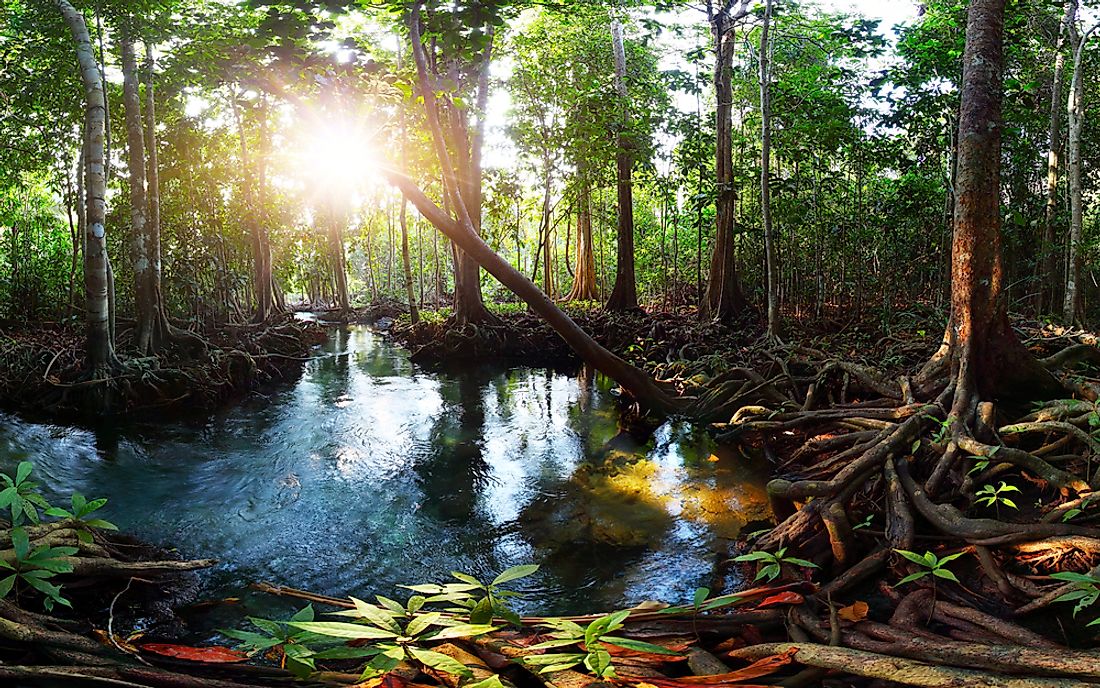Peat Swamp Forests – Forest Types Around the World

Peat swamp forests are forests located in subtropical and tropical regions of the world. These forests are characterized by poor drainage and waterlogged soils that can retain water on the surface for a long time. Normally, leaves and wood falling off a tree would decompose after a short while. However, the waterlogged soils on the surface of peat swamp forest prevent the woods and leaves from fully decomposing. The undecomposed woods and leaves pile up after a period of time to form a thick acidic layer that is often referred to as a peat. The peat swamp forests usually exist alongside the subtropical and tropical forests. In areas where the peat swamp and tropical forest are, the amount of carbon accumulation is usually way higher than in areas covered by regular forests.
Characteristics of Peat Swamp Forest
The peat swamp forests have tall trees that grow to about 70 meters high. The trees are mainly broad-leaved and flowering. The layers of peat are usually anaerobic, spongy, mushy, and water-logged. The beds of peat can be up to 20 meters deep. The peats have low PH, usually 2.9 to 4. Besides the low pH, the waters and the peat have minimal nutrients. The water is characterized by a dark brown color as a result of the tannin from fallen leaves and peat. Because of the color of the water, the forest area is also referred to as “black-water swamps.” Peat swamp forests are often surrounded by lowland rain forests. Besides, the areas surrounding the forests has well-drained forests and or salty mangrove forest if the forest is located close to a coastline. During the dry season, the waterlogged soils do not dry up. The forests remain waterlogged and the pools of water lie among the tall trees.
Threats Facing Peat Swamp Forests
There has been a major decline of peat swamp forests since the 1970s. The waterlogged lands have been drained with land reclamation being a major threat to the survival of peat swamp forests. The lands have been reclaimed to pave way for activities such as agriculture and human settlement. Deforestation has played a major role in the decline of peat swamp. Increased logging has seen the number of trees in these forests reduce significantly. These forests are habitat to many animals such as Sumatran tiger and the orangutan. Destroying the peat swamp forests means destroying the natural habitats of such animals, endangering the animals. The destruction of these forests also contributes to the increased level of greenhouse gases by increasing the levels of carbon dioxide in the atmosphere.
Location of Peat Swamp Forests around the World
The majority of the peat swamp forests are found in Indonesia. In fact, over half of the peat swamp forests in the world are in Indonesia. Some of these forests can also be found in Malaysia and Papua New Guinea. Smaller peat swamp forests are found in Thailand, the Philippines, Brunei, and Vietnam. The Borneo Forest in Borneo Island in Malaysia and Kalimantan Forest are some of the popularly known peat swamp forests.











